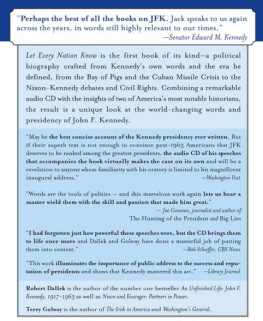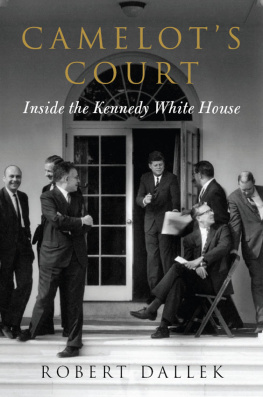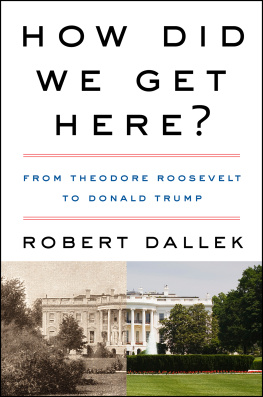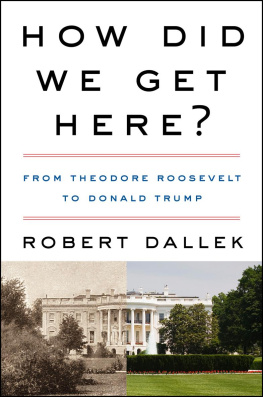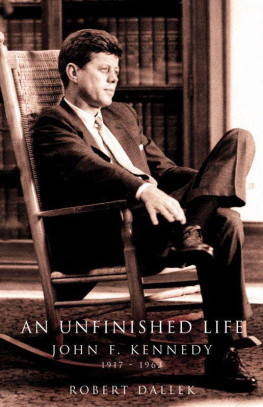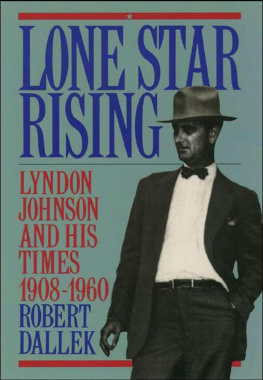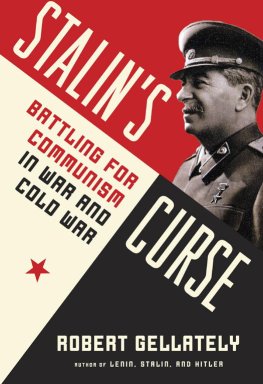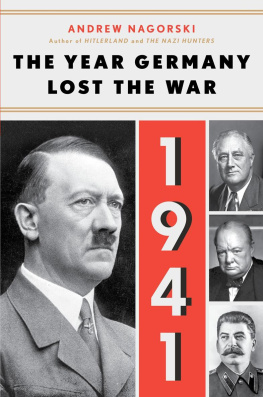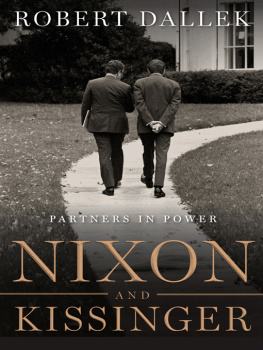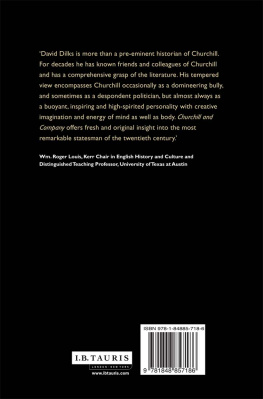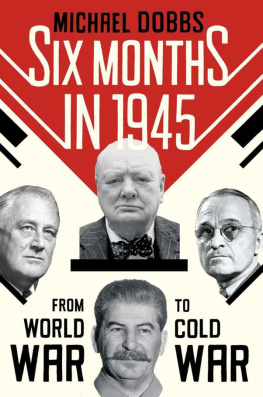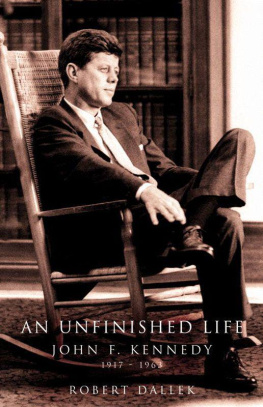I have no high opinion of human beings: they are always going to fight and do nasty things to each other.
George F. Kennan, 1976
A t the start of 1945, total war had absorbed the worlds energies for almost ten of the centurys first forty-four years. Winston Churchill thought of the period between 1914 and 1945 as another Thirty Years War. And in 1948 he lamented the fact that after all the exertions and sacrifices of hundreds of millions of people and of the victories of the Righteous Cause, we have still not found Peace or Security. It was, in his words, the human tragedy.
So much of what happened throughout the twentieth century, Churchill believed, was preventable. World War II, he told Franklin Roosevelt, should have been called The Unnecessary War, as many said of the centurys first great war. And could also be said of much of the post-1945 international strife.
It may well be that a human affinity for struggle and conflict make warwhether among tribes, religions, or nationsinevitable. But heads of state have always had the power to influence events, especially at the end of World War II, when the defeat of Nazism, Fascism, and Japanese militarism presented an uncommon opportunity for more rational, humane governance.
The rise of new international conflicts or the failure to secure a stable, more durable peace can be blamed on a blundering generation of leaders around the world. If this had been a period when American, European, and Asian rulers were notable for their limitations, the lost opportunity might be more understandable. But the sitting and emerging chiefs of state were as able and effective a group of executives as we have seen in any one generation in modern times. This is not to suggest that they were so superior in understanding and judgment to most other preceding and subsequent heads of government that they could do no wrong; they were as vulnerable to human miscalculation as all of us. Still, they were impressively talented politicians blessed by circumstances favorable to changing international relations for the better. But they didnt, or at least fell well short of what they might have accomplished. Why and how the worlds leaders blundered is the focus of this book.
At the start of the twentieth century, some European thinkers saw the state of war as essential to a nations survival. Not only did external threats from other countries that coveted territory and resources beyond their borders encourage national militancy between states, but the discipline of a command system also seemed likely to make citizens more productive and the nation more prosperous. And even more than any material benefits generated by a country at war were the intangiblesnational pride in disciplined forces performing heroic deeds has had enduring universal appeal. Being too proud to fight has never been a match for courageous warriors ready to give their lives for some larger good.
Yet while national leaders have always justified war by invoking the nobility of patriotic sacrifice, they have also made the case for war as a prerequisite for lasting peace. How many in the aggressor nations in 1914 or 1939, however, especially the mass of Germans who rallied to Adolf Hitlers marching orders, would have chosen war if they knew what costs in suffering these conflicts would produce without the promised respite from bloodshed? The horrors of the years between 1914 and 1945 undermined the belief of even the most confident advocates of military action that they could turn the world toward long-term peace. The brutal trench warfare and strains on civilian populations of 191418 that destroyed 18 million lives convinced some observers in the 1920s and 30s that total war between advanced industrial societies was too destructive to victors and vanquished alike to let countries ever fight again. As French premier Georges Clemenceau said after 1918, War is a series of catastrophes that results in a victory.
Although a formidable pacifist movement sprang up in Europe and America after 1918, millions of people, especially in the defeated nations, turned the war into a holy crusade. They prided themselves on having fought for a larger good, believing the sacrifice of so much blood and treasure a noble enterprise. This pride, combined with the losers passion for revenge and the economic collapse of the 1930s, renewed millions of peoples faith in the regenerative powers of violence: it allowed Hitler to launch Germany, and ultimately all Europe and the world, into the second great war in a generation. The savagery of the conflict, however, makes it difficult to understand how anyone in Germany, Italy, Japan, and Russia, the aggressor nations, could have justified it as worthy of moral support. The image of the Soviet Union as a victim of aggression should be balanced against its attacks on Finland and Poland.
World War II consumed as many as 50 million lives, giving warfare an unprecedented claim on merciless brutality. War had always produced terrible acts of inhumane violence, but never on a scale like that of 193945.
The war may be recalled not just as an all-out conflict between belligerents but also as the collapse of civilized behavior. The combined German-Italian air attacks on Republican-controlled cities in the Spanish Civil War of 193639, most notably the assault on the Basque town of Guernica, which Pablo Picasso memorialized in his universally recognized painting; the Japanese Rape of Nanking in 1937, in which as many as 300,000 Chinese were brutally killed; and the Nazi air raids on London that launched the round of devastating bombardments against innocent civilians, which eventually led to the Allied firebombings of Dresden and Tokyo and the slaughter of over 100,000 Japanese in the atomic decimations of Hiroshima and Nagasakiall were calculated acts of destruction in the service of what the belligerents justified as self-defense and deserved punishment of ruthless enemies.
The Nazi scorched-earth devastation of Russia, which took over 25 million military and civilian lives, aimed to destroy Stalins Communist regime and subjugate what the Nazis considered Russias subhuman Slavs. An orgy of rape and killing by invading Soviet troops in Germany in 1945 was accepted by most people in the West as understandable, if not justifiable, acts of revenge. By contrast, the massacre of over 20,000 Polish officers by the NKVD (Soviet secret police) on orders from Stalin and the Politburo was seen in the West as an act of Soviet ruthlessness to eliminate competitors for the future control of Poland. For the sake of wartime unity, however, London and Washington accepted Soviet assertions of German culpability.
The Bataan Death March in the Japanese-American conflict was one of the most infamous episodes in the Pacific War. More than 70,000 already undernourished U.S. and Filipino troops were forced to walk without food and water some eighty miles to prison camps, while being beaten and bayoneted along the way. The Japanese cruelty to surrendering forces, which they viewed as unworthy of honorable treatment, stirred passions for revenge against an enemy seen as undeserving of regard as fellow human beings. Images of Japanese as bloodthirsty fanatics committing atrocitiesand metaphors about exterminating vermin, usually yellow ratsabounded in the United States during the war.
Japanese troops, who died by the tens of thousands rather than surrender to the Americans in their Pacific Island campaigns, saw capture as too frightening and death as more honorable than giving up. Indoctrinated with propaganda that U.S. Marines had gained admission to the corps by killing their parents, the Japanese believed that American captors would reciprocate the ferocity that they themselves used against their prisoners. And there was some basis for their fear: inflamed by stories of Japanese brutality toward captives, eagerness to die for their emperor, and booby traps on surrendering troops, American soldiers killed combatants trying to surrender, mutilated their bodies, and turned body parts into souvenirs.


